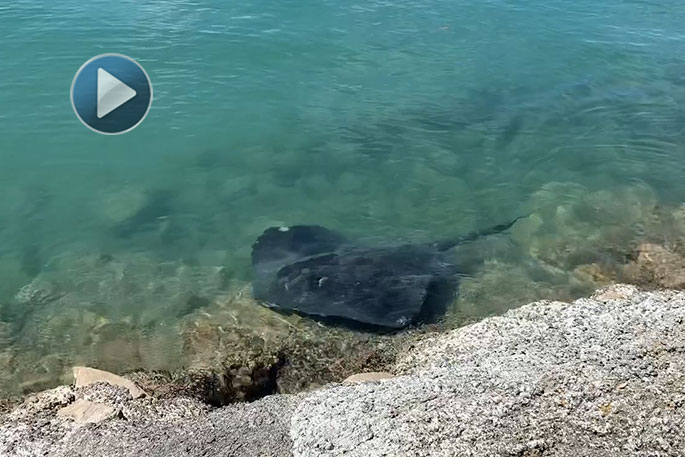A stingray sighted on Tauranga waterfront this week has sparked a reminder from experts on ways to respectfully share habitats with marine life.
A video clip taken by a SunLive reader on Monday, shows the stingray swimming close to the shore near the Strand waterfront.
University of Waikato researcher and PHD student Helen Cadwallader identifies it as being a short-tail stingray, a Bathytoshia brevicaudata, which is one of the most common big stingrays in New Zealand.
She says its sighting is completely normal.
'In the summer it's a pretty regular sight down on the rock walls around the waterfront on the strand and around the marinas. We're not sure why, it may be that they're eating little fish that live around the rock walls.”
Helen says while sightings are always special, members of the public should enjoy the experience but leave stingrays alone.
'Stingrays have a spine on their tail that can cause extreme pain and quite a lot of damage, but they won't ‘attack'. They don't go out to chase you down and attack, what they do is entirely self-defence.
'They may for example lash out if they get startled or feel threatened, for instance if someone swims over their back and it doesn't know they're there, or if they're stepped on.
'The safest thing to do is give them as much space as you can.”
She also recommends to avoid feeding them.
'Please don't, especially not human food like bread as this could cause them to become sick.
'We're very lucky here to have these creatures to see so close to the city, many researchers I speak to are surprised that they live so close to us, as they do here.
'They do need to be treated with respect.”
As part of her research, Helen has tagged more than 32 rays in the Tauranga harbour.
'While they are very common, there's actually very little research about them. What my research is hoping to do is work out where they are going and what they are doing.”
She says their tags are typically coloured pieces of plastic in the form of dart or circular, which can be located near their head or back
She says anyone who identifies stingrays that are tagged should email her [email protected]



0 comments
Leave a Comment
You must be logged in to make a comment.